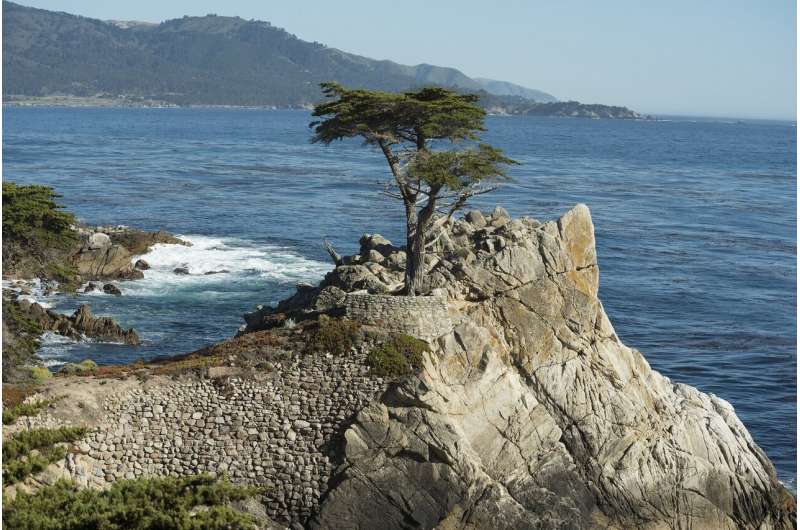
Two of President Joe Biden's biggest priorities—conservation and the switch to clean energy—are colliding in the ocean off California's quiet Central Coast.
Located halfway between San Francisco and Los Angeles, Morro Bay boasts a rich ecosystem of fish, otters and migrating whales that the Indigenous Chumash people want to protect with a new marine sanctuary. But 20 miles (32 kilometers) out, developers plan some of the West Coast's first offshore wind farms, where 1,100-foot-tall turbines (335 meters) tethered to the seabed will help California cut its carbon emissions.
One U.S. government agency appears poised to approve the sanctuary. Another already leased 376 square miles of ocean for wind development, just outside the sanctuary's boundaries. Now, a fight is brewing over whether the scenic bay itself should be left out of the sanctuary, to give undersea power cables from the wind farms a place to come onshore.
Both sides see larger stakes. California officials say they need offshore wind to reach the state's goal of eliminating carbon emissions by 2045. But huge swaths of the coast are already shielded by a string of federal ocean sanctuaries. Even if it excludes Morro Bay, the proposed Chumash Heritage National Marine Sanctuary would extend that protected zone another 134 miles, blocking most wind development from Santa Barbara to north of San Francisco.
The dispute in eco-conscious California highlights the intense opposition large renewable power projects often face, even in states committed to the fight against climate change.
And it comes as the offshore wind industry worldwide struggles with supply chain disruptions and inflation woes that have led to failed projects and canceled contracts in the eastern U.S. The estimated cost of electricity from a U.S. offshore wind farm jumped nearly 50% from 2021 to 2023, according to the BloombergNEF research company, threatening state and federal goals to get more clean power from the sea. Biden wants 30 gigawatts of offshore wind installed by 2030, enough to power more than 10 million homes.
"California and the whole West Coast can become a leader in floating wind, but it can't be a leader if the federal government is going to put obstacles in place in the form of massive sanctuaries," said Erik Milito, president of the National Ocean Industries Association, an industry trade group.
For the people behind the sanctuary proposal, that kind of development-first approach to the ocean is precisely what they're trying to prevent. Leaving room for the wind farm cables now, they say, could provide an opening later for oil exploration or seafloor mining.
"If renewable energy developers are allowed to run afoul just like fossil fuel interests do, what's the point?" said Violet Sage Walker, chairwoman of the Northern Chumash Tribal Council. "There is so much at risk here. Morro Bay is a sacred place, yet its history of environmental degradation spans generations. We do not want to see this legacy of disrespect continue."
California officials say, however, that a balance between conservation and development can be struck. Enough coastal waters remain unprotected by sanctuaries that the state should be able to meet its offshore wind goals, said David Hochschild, chair of the California Energy Commission. "I don't want to understate how complex and significant the challenges are that we have to work through, but none of the problems are outside the realm of being solvable," he said.
With calm, sparkling waters and wildflower-covered hills, Morro Bay teems with retirees, surfers and those who prefer a slower life. From the shore rises a striking landmark held sacred by tribes—Morro Rock, a volcanic dome the local Chumash call Lisamu' towering 580 feet above the bay. Sea otters sunbathe on nearby rocks, while harbor porpoises break the glassy ocean's surface.
2024 Bloomberg L.P. Visit bloomberg.com. Distributed by Tribune Content Agency, LLC.
Citation: Clean energy and conservation collide in California coastal waters (2024, February 14) retrieved 14 February 2024 from https://techxplore.com/news/2024-02-energy-collide-california-coastal.html
This document is subject to copyright. Apart from any fair dealing for the purpose of private study or research, no part may be reproduced without the written permission. The content is provided for information purposes only.
